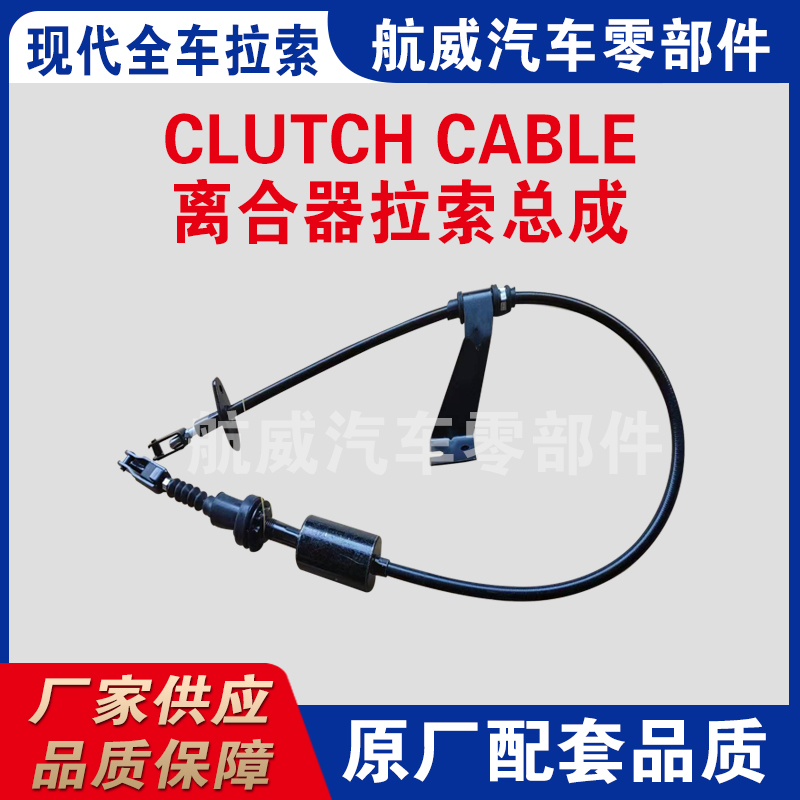clutch slave cylinder pipe
Understanding the Clutch Slave Cylinder Pipe A Key Component in Vehicle Performance
The clutch system in a vehicle plays a crucial role in the operation and performance of the engine and transmission. Among its components, the clutch slave cylinder pipe is particularly important as it facilitates the hydraulic actuation of the clutch system. This article aims to delve into the functionality, importance, common issues, and maintenance tips regarding the clutch slave cylinder pipe.
What is the Clutch Slave Cylinder Pipe?
The clutch slave cylinder pipe is a hydraulic line connecting the clutch master cylinder to the clutch slave cylinder. The clutch master cylinder generates hydraulic pressure when the clutch pedal is pressed, which then travels through this pipe to the slave cylinder. The slave cylinder, in response, engages or disengages the clutch mechanism, allowing the driver to shift gears smoothly. This hydraulic system removes the need for mechanical linkages, providing a more responsive and efficient clutch operation.
Importance of the Clutch Slave Cylinder Pipe
1. Fluid Transfer The primary role of the clutch slave cylinder pipe is to transfer hydraulic fluid from the master cylinder to the slave cylinder. This fluid transfer is crucial for the smooth operation of the clutch system. Any blockage or leakage in the pipe can lead to system failure, making the vehicle challenging to drive.
2. Pressure Regulation The pipe is designed to handle high pressure generated in the clutch system. Proper regulation ensures that the clutch engages and disengages at the appropriate times, preventing slippage or stalling.
3. Durability and Safety The clutch slave cylinder pipe is typically made from materials that can withstand exposure to various elements, such as heat, oil, and moisture. A durable pipe is essential for long-term reliability, enhancing the overall safety of the vehicle.
Common Issues with Clutch Slave Cylinder Pipe
Despite its importance, the clutch slave cylinder pipe is not immune to issues. Here are some common problems associated with it
- Leaking Fluids One of the most prevalent issues is leaking hydraulic fluid. This can occur due to wear and tear, corrosion, or physical damage to the pipe. Leaks can lead to a decrease in hydraulic pressure, making it difficult to engage or disengage the clutch.
clutch slave cylinder pipe

- Air Bubbles If air enters the hydraulic system, it can cause spongy clutch pedal feel and inconsistent engagement, thereby affecting the transmission's performance.
- Blockage Over time, debris or sediment can accumulate within the pipe, leading to blockages. This impedes the flow of hydraulic fluid, potentially causing abrupt shifting or clutch malfunction.
Maintenance Tips
Maintaining the clutch slave cylinder pipe is essential to ensure the longevity and reliability of the clutch system. Here are some maintenance tips
1. Regular Inspections Periodically check the condition of the clutch slave cylinder pipe for signs of leaks or physical damage. Early detection can prevent more serious issues down the line.
2. Check Fluid Levels Keeping an eye on the hydraulic fluid levels in the reservoir can help identify leaks or other issues with the system.
3. Flush and Replace Fluid Over time, the hydraulic fluid can degrade or become contaminated. Flushing the system and replacing the fluid regularly can improve the functionality of the clutch system.
4. Professional Servicing If any issues are detected during inspections, it's advisable to seek professional servicing. Technicians can diagnose and repair problems effectively, ensuring the clutch system operates optimally.
Conclusion
The clutch slave cylinder pipe may be a small component, but its role in the clutch system is vital for ensuring smooth driving experiences. By understanding its function, recognizing common issues, and implementing regular maintenance practices, vehicle owners can prolong the lifespan of their clutch systems and enhance their overall driving experience.
-
Upgrade Your Control with Premium Throttle CablesNewsAug.08,2025
-
Stay in Control with Premium Hand Brake CablesNewsAug.08,2025
-
Experience Unmatched Performance with Our Clutch HosesNewsAug.08,2025
-
Ensure Safety and Reliability with Premium Handbrake CablesNewsAug.08,2025
-
Enhance Your Vehicle with High-Performance Clutch LinesNewsAug.08,2025
-
Elevate Your Ride with Premium Gear CablesNewsAug.08,2025
